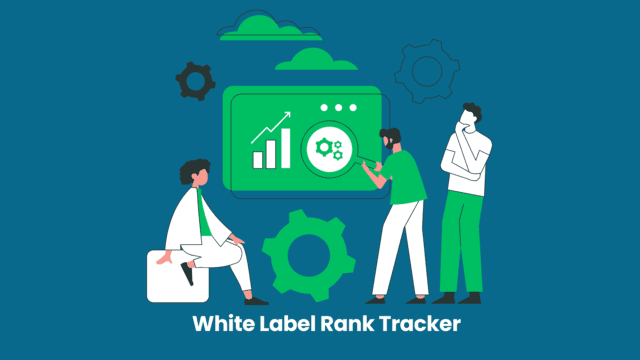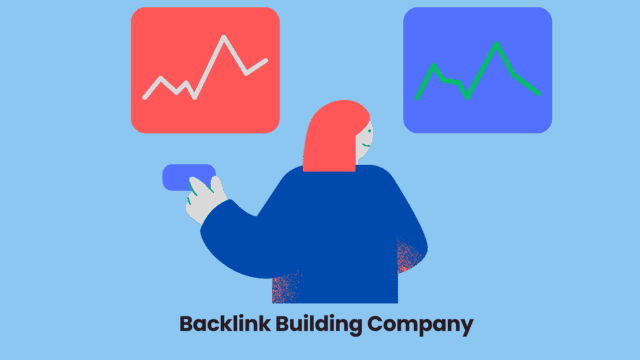Discover the power of law firm SEO. Increase your website’s visibility and attract more clients in the competitive legal industry. Learn essential SEO strategies for law firms to enhance online visibility and attract more clients. Discover effective practices like keyword research, content optimization, link building, and technical SEO. Understand the importance of high-quality backlinks, on-page SEO techniques, and leveraging industry-specific platforms. Boost your law firm’s digital presence with tailored SEO strategies that comply with legal industry standards.
Introduction to Law Firm SEO
Search Engine Optimization (SEO) is essential for law firms looking to enhance their online visibility and attract more clients. In the current digital landscape, a strong online presence can significantly impact your firm’s ability to reach potential clients who rely heavily on search engines to find legal services.
Why SEO Matters for Law Firms
A significant majority of consumers—up to 74%, according to a study by FindLaw—visit a law firm’s website to take action, either by contacting the firm directly or using available resources. SEO helps your firm’s website rank higher on search engine results pages (SERPs), making it more accessible to people searching for legal assistance.
Key Components of SEO for Law Firms
1. Keyword Research
- Keywords are the foundation of any SEO strategy. For law firms, this means focusing on specific, long-tail keywords such as “personal injury lawyer in [city]” rather than broad terms like “lawyer.”
- Tools like Google Keyword Planner and SEMrush can help identify the most relevant keywords for your practice.
2. Content Optimization
- High-quality, informative content is crucial. This includes blog posts, FAQs, case studies, and service pages, all optimized with your target keywords.
- Make sure your content addresses common questions and concerns potential clients might have.
3. Local SEO
- Since legal services are often location-specific, optimizing for local search is key. Ensure your firm is listed on Google My Business and other local directories.
- Encourage satisfied clients to leave positive reviews, as these can significantly impact your local search rankings.
4. Link Building
- Earning backlinks from reputable websites enhances your site’s authority. This can be achieved through guest blogging, partnerships, and creating shareable content.
5. Technical SEO
- Ensure your website is technically sound. This includes fast loading times, mobile-friendliness, SSL certification, and a clean site architecture.
- Use tools like Google Search Console to monitor and resolve any technical issues.
Ethical Considerations
Law firms must adhere to industry-specific regulations and ethical guidelines in their SEO practices. Misleading information, over-promising results, or compromising client confidentiality can lead to serious repercussions.
Proven Impact
Effective SEO can transform a law firm’s online presence. According to BrightLocal, 87% of people read online reviews for local businesses, including law firms. Moreover, appearing on the first page of Google can drive as much as 53% of organic search traffic to your website, significantly increasing client acquisition.
Investing in SEO is more than just improving search engine rankings; it’s about building a credible and authoritative online presence. By understanding and implementing tailored SEO strategies, law firms can differentiate themselves in a competitive market, attract more clients, and establish themselves as leaders in their areas of practice.
Keyword Research and Optimization
Effective keyword research and optimization are critical components of a successful SEO strategy. Properly identifying and targeting the right keywords can significantly increase your website’s visibility and attract more relevant traffic.
Keyword Research
Keyword research involves finding the search terms that potential customers use when looking for products or services similar to yours. To perform effective keyword research, follow these steps:
- Brainstorm Seed Keywords:
Begin by thinking about the main topics related to your business. Write down a list of words and phrases that are relevant to your products, services, or content. - Use Keyword Research Tools:
Utilize tools like Google Keyword Planner, SEMrush, Ahrefs, or Ubersuggest to expand your list of keywords. These tools can provide valuable data on search volume, keyword difficulty, and trends. - Analyze Competitors:
Examine the keywords that your competitors are targeting. Tools like SEMrush and Ahrefs can help you identify the keywords that are driving traffic to their websites. - Identify Long-Tail Keywords:
Long-tail keywords are longer, more specific phrases that typically have lower search volume but can attract more targeted traffic. For example, instead of “shoes,” consider “women’s running shoes for flat feet.” - Evaluate Search Intent:
Understand the search intent behind the keywords. Are users looking for information, comparing products, or ready to make a purchase? Choose keywords that align with the intent of your target audience.
Keyword Optimization
Once you have identified the right keywords, it’s time to optimize your content. Here are some tips for effective keyword optimization:
- On-Page SEO:
- Title Tags: Include your primary keyword in the title tag, preferably at the beginning.
- Meta Descriptions: Write a compelling meta description that includes your primary and secondary keywords.
- Headings (H1, H2, H3): Use keywords in your headings to structure your content and improve readability.
- URL Structure: Incorporate keywords into your URLs to provide better context for search engines and users.
- Body Content: Naturally incorporate keywords throughout your content. Avoid keyword stuffing, and aim for a keyword density of 1-2%.
- Content Quality:
Create high-quality, valuable content that addresses the needs and interests of your audience. Focus on providing solutions, answering questions, and offering insights. - Internal Linking:
Use internal links to connect related content on your website. This helps search engines understand the context of your content and improves site navigation for users. - Image Optimization:
Optimize images by using descriptive file names and including keywords in alt text. This can help your images rank in image search results. - User Experience:
Ensure your website is user-friendly, with fast loading times, mobile responsiveness, and easy navigation. A positive user experience can indirectly impact your search engine rankings.
By conducting thorough keyword research and optimizing your content, you can enhance your website’s search engine visibility and attract more targeted traffic, ultimately driving more engagement and conversions.
On-Page SEO Techniques for Law Firms
Enhancing your law firm’s online presence starts with mastering on-page SEO techniques. These foundational aspects of search engine optimization play a crucial role in elevating your website’s visibility and ranking in search engine results pages (SERPs). Key areas to focus on include optimizing title tags, meta descriptions, header tags, and URL structures.
Title Tags and Meta Descriptions
Title Tags are essential in indicating the content of your pages to both search engines and users. By incorporating relevant keywords naturally and ensuring that titles are concise and descriptive, your title tags can improve your click-through rates. Similarly, well-crafted meta descriptions serve as a brief summary of your page’s content, prompting users to visit your site. Meta descriptions should be engaging, include your primary keyword, and accurately reflect the content you are offering.
Header Tags
Header Tags, ranging from H1 to H6, are another crucial component. They help structure your content, making it easier for search engines to understand the hierarchy and relevance of your information. Your H1 tag should encapsulate the main topic of your page, while H2 and subsequent headers break down the content into digestible sections for better readability and SEO performance.
URL Structure
The URL Structure of your pages also matters significantly. URLs should be clear, concise, and keyword-rich, avoiding unnecessary parameters and special characters. A clean URL not only improves user experience but also aids search engines in indexing your pages effectively.
High-Quality Content
High-quality, relevant content is the cornerstone of any successful on-page SEO strategy. For legal websites, this means creating informative, well-researched pages that address potential clients’ concerns and questions. Content should be original, authoritative, and updated regularly. Utilizing internal linking effectively can further enhance your SEO standing. Internal links guide users to additional, relevant content on your site, distributing authority across your pages and helping with navigation.
Mobile-Friendliness and Website Speed
Lastly, consider the importance of mobile-friendliness and website speed. With the increasing use of mobile devices for internet browsing, a mobile-responsive design ensures that your website caters to all users. Additionally, website speed is a critical factor that impacts both user experience and SEO performance. Faster loading times can reduce bounce rates and improve your site’s ranking on search engines.
Off-Page SEO and Link Building Strategies
1. Guest Blogging
Guest blogging is one of the most effective ways to build backlinks. By writing articles for reputable websites within your industry, you not only gain backlinks but also establish yourself as an authority in your niche.
- Identify Relevant Sites: Focus on blogs and websites that are relevant to your industry or niche.
- Create Quality Content: Ensure that the content you provide is high-quality, valuable, and tailored to the audience of the site you’re targeting.
- Build Relationships: Engage with site owners and editors to foster long-term relationships for future guest posting opportunities.
2. Social Media Engagement
Active participation on social media platforms can help in generating natural backlinks.
- Share Content: Regularly share your content on platforms like LinkedIn, Twitter, and Facebook.
- Engage With Influencers: Build relationships with influencers in your industry who can share your content and link back to your site.
- Encourage Shares: Create shareable content, such as infographics, videos, and compelling blog posts.
3. Influencer Outreach
Collaborating with influencers in your industry can be a powerful way to acquire high-quality backlinks.
- Identify Influencers: Use tools like BuzzSumo or Ahrefs to find influencers who are relevant to your niche.
- Personalized Outreach: Send personalized emails to influencers, showcasing how your content can be beneficial to their audience.
- Offer Value: Provide exclusive content, interviews, or collaborations that can entice influencers to link back to your site.
4. Content Marketing
Creating compelling content that others want to link to is a cornerstone of any link-building strategy.
- Create Linkable Assets: Develop high-quality content such as research studies, infographics, and comprehensive guides.
- Promote Your Content: Use email outreach, social media, and online communities to promote your content and encourage backlinks.
- Update Regularly: Keep your content updated to ensure it remains relevant and continues to attract backlinks.
5. Online Directories and Listings
Submitting your site to online directories can be a straightforward way to build links.
- Choose Niche Directories: Focus on directories that are relevant to your industry.
- Ensure Accuracy: Make sure your information is accurate and consistent across all listings.
- Monitor Listings: Regularly check and update your listings to ensure they remain active and accurate.
6. Broken Link Building
Identify and replace broken links on other websites with links to your content.
- Find Broken Links: Use tools like Ahrefs or Screaming Frog to find broken links on reputable sites.
- Create Replacement Content: Offer your content as a replacement for the broken link.
- Outreach: Contact the website owner and suggest your content as a replacement, providing details on the broken link and how your content can be a valuable substitute.
7. Forum and Community Participation
Actively participating in forums and online communities can lead to valuable backlinks.
- Join Relevant Forums: Participate in forums related to your industry or niche.
- Add Value: Provide valuable insights and solutions, and include a link to your site where it is relevant and allowed.
8. Skyscraper Technique
Find popular content, improve it, and promote your superior version to earn backlinks.
- Identify High-Performing Content: Use tools like BuzzSumo to find content that has garnered a lot of backlinks.
- Create Better Content: Enhance the identified content by adding more value, updating information, or improving the design.
- Outreach: Reach out to sites that linked to the original content and present your superior version as a resource.
Implementing these off-page SEO and link-building strategies can significantly enhance your website’s authority and search engine rankings. Focus on building genuine relationships, creating valuable content, and engaging with your audience to achieve long-term success.
Top 10 SEO Strategies for Law Firms
- Keyword Research and Targeting: Identify high-intent keywords relevant to your legal services. Use tools like Google Keyword Planner, SEMrush, and Ahrefs to discover both short-tail and long-tail keywords that potential clients are likely to search for.
- Content Creation: Develop high-quality, informative, and engaging content that addresses common legal questions and concerns. This includes blog posts, articles, FAQs, case studies, and industry updates.
- On-Page SEO: Optimize your website’s on-page elements, such as title tags, meta descriptions, header tags, and URL structures. Ensure that keywords are naturally incorporated and the site is easy to navigate.
- Local SEO: Optimize for local search by creating and verifying your Google My Business listing. Encourage clients to leave reviews and ensure your NAP (Name, Address, Phone Number) information is consistent across all online directories.
- Mobile Optimization: Ensure your website is mobile-friendly. A responsive design that functions well on various devices is crucial for user experience and search engine rankings.
- Link Building: Acquire high-quality backlinks from reputable sources. Engage in guest blogging, collaborate with legal directories, and contribute to industry-specific publications to build your backlink profile.
- Technical SEO: Improve your website’s technical aspects, such as site speed, mobile usability, and secure HTTPS connection. Use tools like Google Search Console to identify and fix technical issues.
- User Experience (UX): Enhance the overall user experience by ensuring your website is easy to navigate, visually appealing, and provides valuable information. Improve site speed and usability to reduce bounce rates.
- Online Reviews: Encourage satisfied clients to leave positive reviews on platforms like Google My Business, Avvo, and Yelp. Positive reviews influence potential clients and improve your local search rankings.
- Social Media Engagement: Maintain active profiles on social media platforms like LinkedIn, Twitter, and Facebook. Share valuable content, engage with followers, and build a community around your law firm.
Side-By-Side SEO Vendor Comparison
| Feature | Vendor A | Vendor B | Vendor C |
|---|---|---|---|
| Keyword Research | Google Keyword Planner, Ahrefs, SEMrush | Moz, Ubersuggest, Ahrefs | SEMrush, SpyFu, Ahrefs |
| Content Creation | In-house team, Freelance writers | Content agencies, Freelance writers | In-house team, Copywriters |
| On-Page SEO | Expert team for on-page optimization | Automated tools, Expert team | Expert consultants |
| Local SEO | Google My Business optimization, Local directories | Local citations, GMB management | Local SEO specialists, GMB setup |
| Mobile Optimization | Responsive design experts | Mobile speed optimization, Responsive design | Full mobile optimization services |
| Link Building | Guest blogging, Industry partnerships | Manual outreach, High-authority directories | Automated tools, Expert outreach |
| Technical SEO | Full audit, Site speed enhancements | Technical audit, Mobile usability analysis | Comprehensive technical audit |
| User Experience (UX) | UX designers, Site usability testing | Web developers, UX audit | Comprehensive UX analysis |
| Online Reviews | Review management software | Manual review strategy, Management tools | Automated review collection |
| Social Media Engagement | Social media managers, Content calendars | Automation tools, Social media strategists | In-house social media team |
By leveraging these top SEO strategies and choosing the right vendor based on their capabilities and your firm’s specific needs. You can significantly improve your online presence and attract more potential clients.















